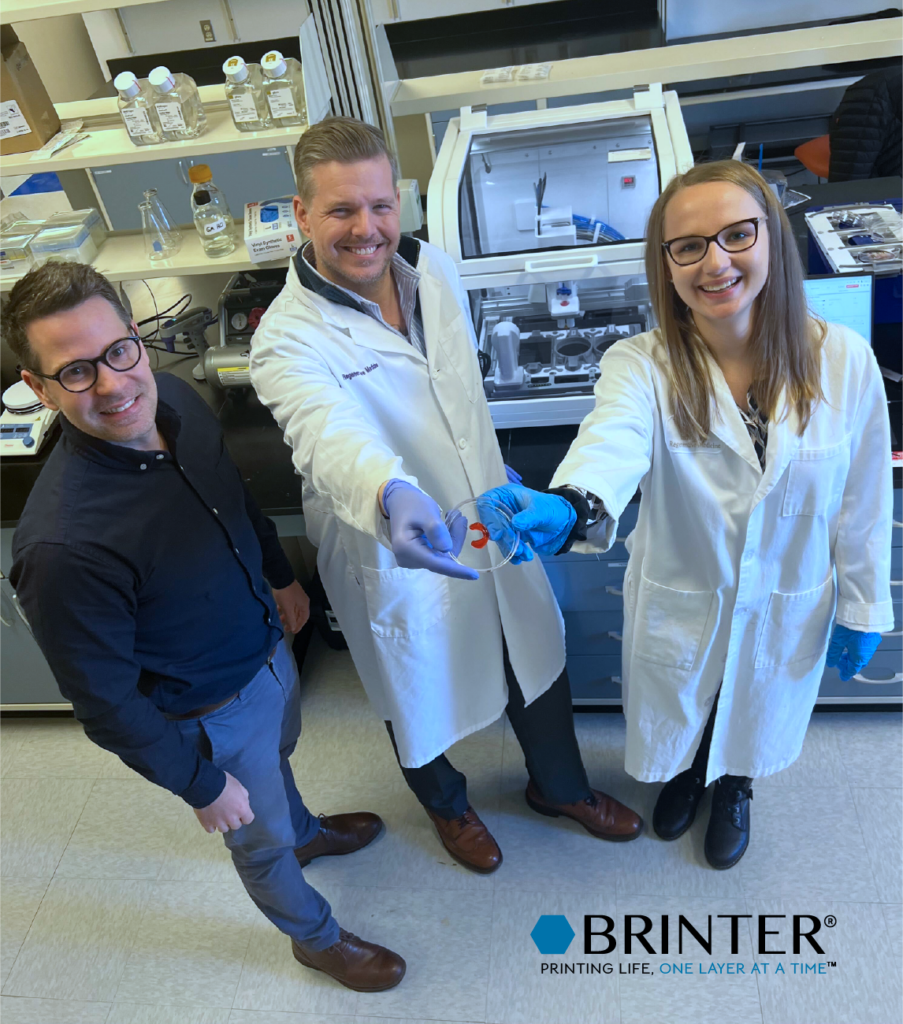Brinter is challenging the status-quo for meniscus repair using 3D bioprinting.
For over 100 years, patients’ meniscus repairs have been done with non-biological materials, like metals, plastics, and polymers, that are rigid and limit patients’ flexibility and mobility.
Brinter is changing this forever with 3D bioprinting durable and functional cartilaginous meniscus bio-implants. The meniscus acts as a shock absorber in our knee joints, and when damaged, is often difficult to heal on its own due to the lack of blood supply.
We use 3D bioprinting and regenerative medicine principles in our solution for cartilage repair to restore joint function and to eliminate pain and mobility issues for patients in the future.
-Eva Mueller, Ph.D., Brinter’s Applications and Innovation Manager.
Regenerative medicine has reached the point where many current orthopedic implants will eventually become obsolete as we push the boundaries of science and engineering. In a sense making, what was once thought impossible, the gold standard for treatment of such disorders.
-Matthew Brovold, Ph.D., Brinter’s Science and Applications Manager.
This is only the beginning. We are excited to continue our vision at the Wake Forest Institute for Regenerative Medicine in North Carolina, and to work with world-class collaborators and scientists to change the landscape for cartilage repair and regeneration.
-Tom Alapaattikoski, CEO Brinter Inc
